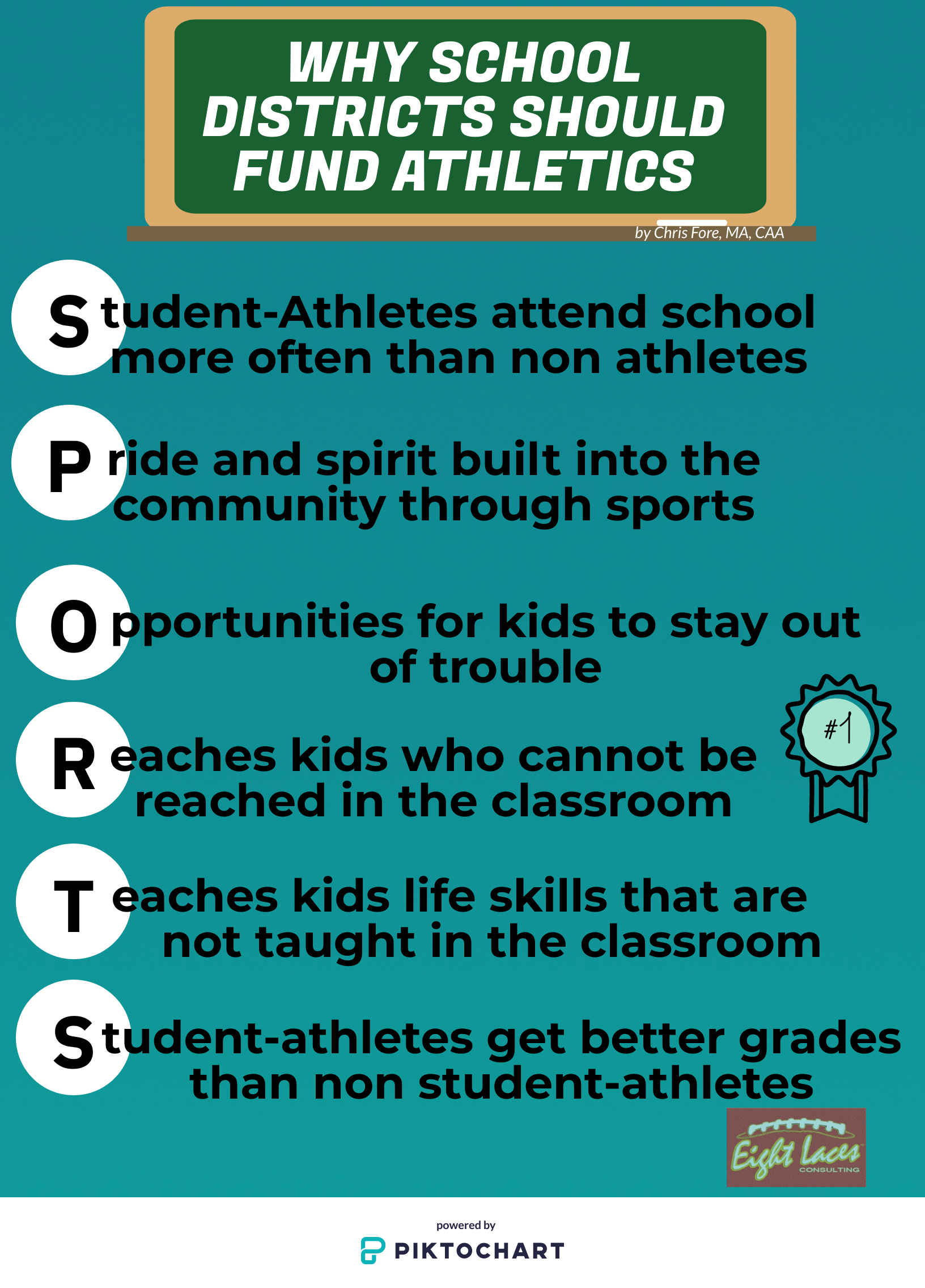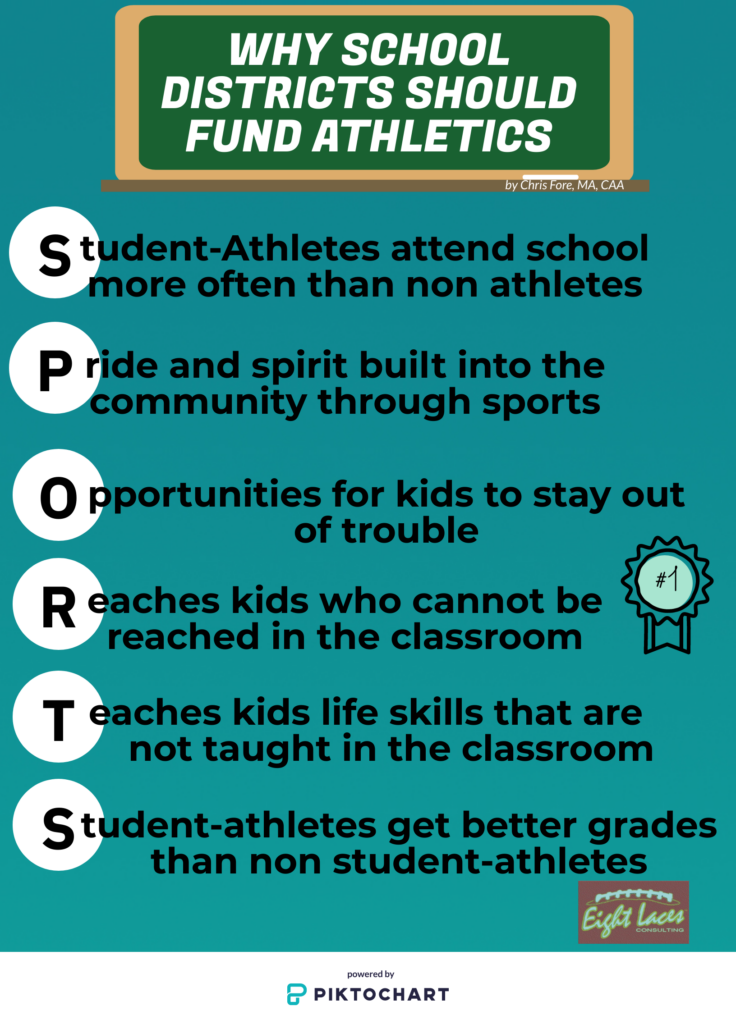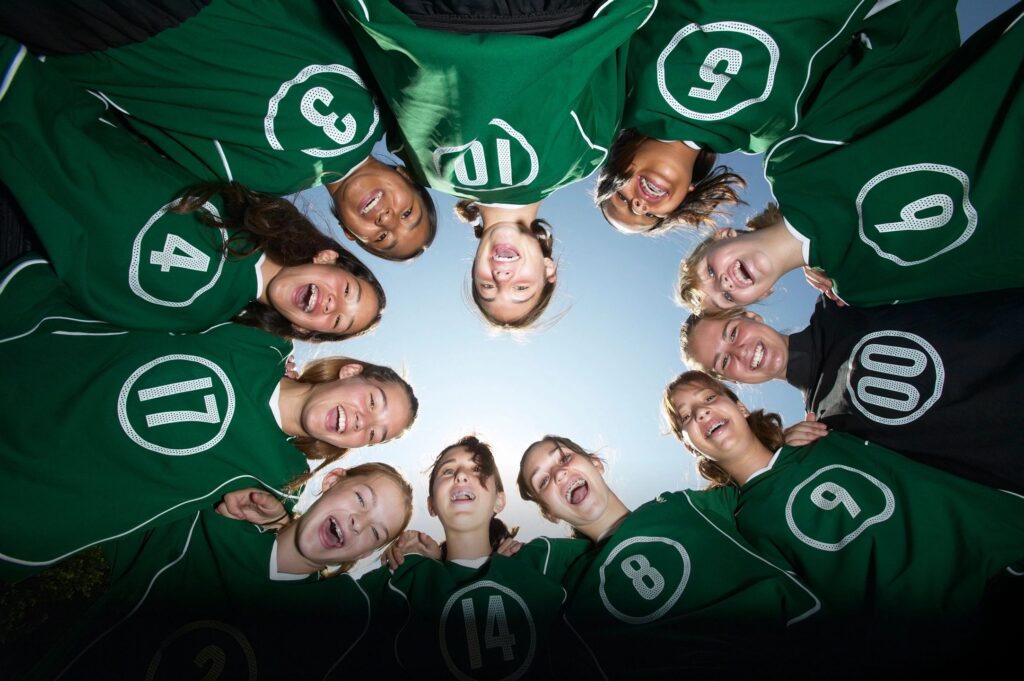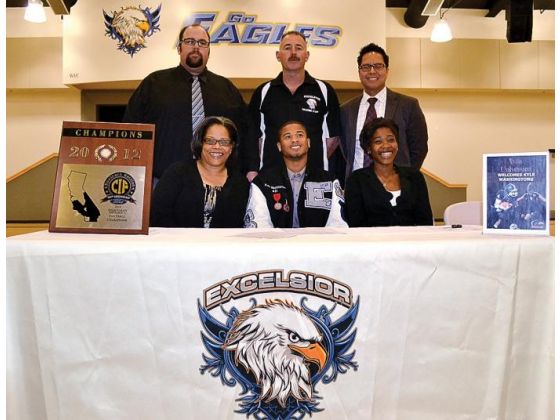
There is a lot of talk surrounding budgets in education right now. Many districts are going to have to make deep cuts.
Usually the “extra-curriculars” end up on the chopping faster than any other aspects of education. District administrators need to take significant time to really evaluate the effects of their cuts at this time. It is easy for a district administrator who hasn’t been on a campus in 15 years, 20 years to delete a line item on a piece of paper without really thinking about what that cut will mean to the community, the students and the school.
There are many, many reasons that school districts need to keep sports funded.
Student-athletes have an enhanced sense of belonging to the school: Involvement in a moderate number of activity domains, among academic/leadership groups, arts activities, clubs, and sports, promotes a greater sense of belonging at school, increased academic engagement, and higher academic performance as measured by grade point average according to a study of urban, ethnically diverse students (40.7% Latino; 16.8% African-American, 12.7% Asian-American, 11.2% Caucasian, and 18.5% other ethnicity or two or more ethnic groups). The study authors suggest that it is necessary for schools “retain ample extracurricular opportunities in order to foster adolescents’ sense of belonging at school and higher academic performance.” They conclude that, “it is essential that schools offer a number of extracurricular activities that capture the diverse interests of the entire student body. Schools can maximize the impact of these activities by encouraging disconnected, low achieving students to join a couple of activities. At a time when school budgets face reductions, this type of research argues for the importance of maintaining a breadth of extracurricular opportunities for students attending urban high schools.” (Knifsend & Graham, 2012).
Here are 6 specific reasons (S.P.O.R.T.S.) that school districts need to continue to fund athletics!
Student-Athletes attend school more often than non athletes
More butts in seats means more money to schools by way of ADA: Average Daily Attendance. Many studies have shown that athletes attend school more frequently than their non playing peers.
One study, at Vista Murrieta High School by former Athletic Director Ray Moore, demonstrated that student-athletes attended school on an average of four days more than their non athletic peers. They had 1,249 student-athletes that year. That is 4,996 days!! At about $60 per day per student, this equals $299,760 of revenue!
One major consideration for districts is what happens when they cut sports? Will Johnny and Sally transfer to a school that does have sports? What kind of ADA will be lost then?
Several previous studies have reported that athletes drop out of high school less often than do
non-athletes (Davalos, Chavez, & Guardiola, 1999; Jansen, 1992; McNeal, 1995; Overton,
2001; Whitley, 1995; Zaff et al., 2003), and this study supports these findings. Non-athletes
in Kansas were over 15 times more likely to drop out of school than were athletes as 1955
non-athletes dropped out during 2008-2009 compared to only 126 athletes.
Pride and spirit built into the community through sports
Let’s face it: thousands of people don’t come to cheer on students for their math test or science lab. They do for the football game on Friday night. Sports inherently bring people together. The old timers sit around in the coffee shops on Saturday morning beaming with pride about last night’s win! This is something that athletics provides communities, and another important reasons that districts need to continue to fund these opportunities.
Opportunities for kids to stay out of trouble
Without sports, many children will find themselves in trouble out of pure boredom and a lack of direction. Playing sports gives students the opportunity to spend their time doing something productive instead of getting into something that will take them down a negative path.
A study using a nationally representative sample of roughly 1,200 public high schools found “that schools with higher proportions of sports participants report significantly fewer serious crimes (i.e., violent crimes) and suspensions occurring on school grounds.” (Veliz & Shakib, 2012).
Reaches kids who cannot be reached in the classroom
Some kids do not like school! (Probably not a shocker.)
This is where sports can come in to reach and teach kids. They will listen to their coach when they won’t listen to their teacher.
School arts participation and engagement are associated with enhanced academic motivation and engagement measures as well as [non-academic] measures of well-being, including a sense of meaning and purpose according to a longitudinal study of students in 15 Australian schools. It also showed that in-school arts participation and engagement measures were more strongly correlated with academic motivation and engagement outcomes and some measures of well-being than non-school related participation measures. (Martin et al., 2013).
Teaches kids life skills that are not taught in the classroom
Sports teaches students things that you just cannot teach in the math or science curriculum. Teamwork, work ethic, handling criticism, time management, pushing yourself physically and mentally, being accountable to others, and so much more.
There are many developmental, psychological, emotional and social benefits that students garner from playing sports that they simply cannot get in the classroom.
Student-athletes get better grades than non student-athletes
Researchers have been able to demonstrate, for many years, at both the high school and college levels that student-athletes perform much better in the classroom than their non athletic peers. Multiple studies can be found below.
A STUDY IN THE GRADE POINT AVERAGE OF ATHLETES VS. NON‐ATHLETES
Kansas high school athletes graduated at a much higher rate (98%) than did non-athletes (88%)
Chris Fore has his Masters degree in Athletic Administration, is a Certified Athletic Administrator and serves as the President of the California Coaches Association. He coached high school football for 17 years, including 8 years as a Head Coach. He is also a court-certified Expert Witness in athletically based court cases. Fore is the CEO of Eight Laces Consulting which specializes in helping coaches nationwide in their job search process, and provides dynamite resources for coaches. Fore has been named to the Hudl Top 100 Coaches, and the Top 5 Best High School Football Coaches to follow on Twitter by MaxPreps. Follow him!




